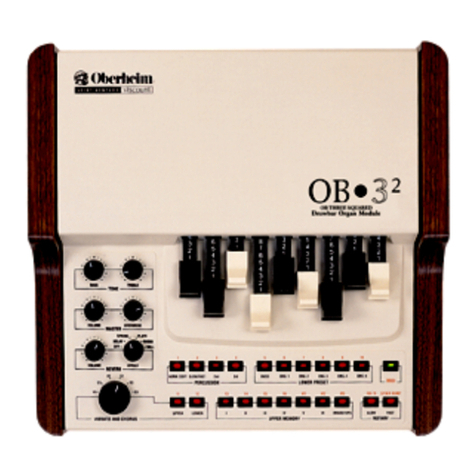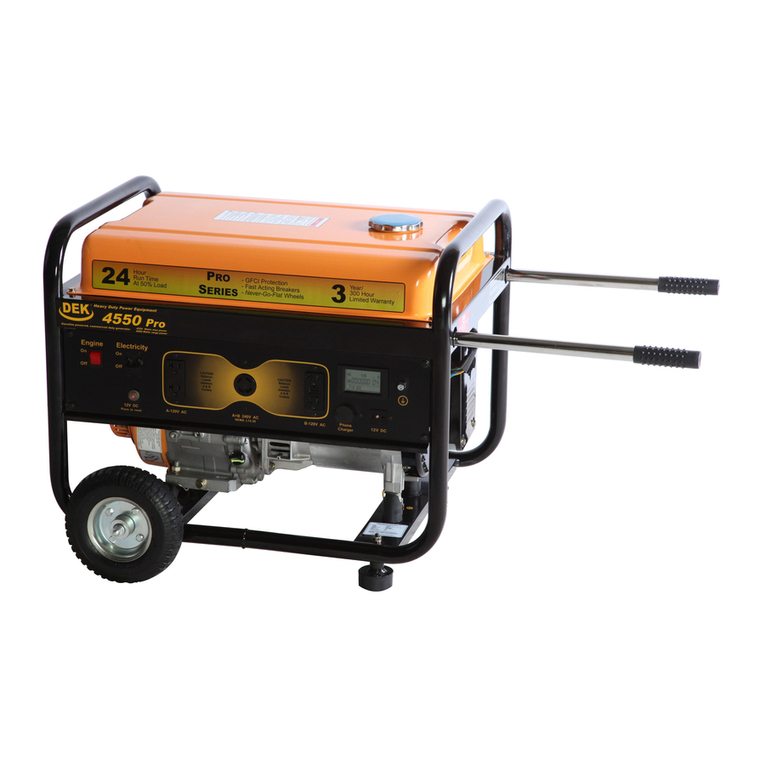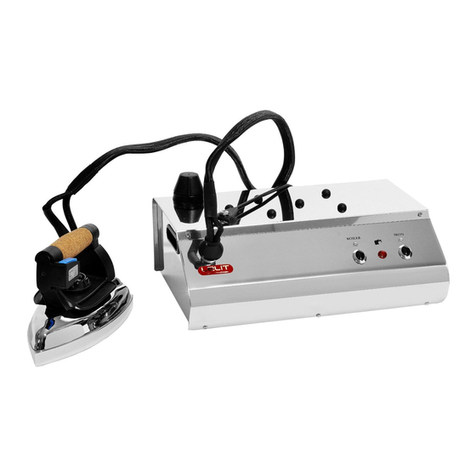SNOWJOE SJG4100LP User manual

© 2021 by Snow Joe®, LLC
All rights reserved. Original instructions. SAVE THESE INSTRUCTIONS
1
EN
A Division of Snow Joe®, LLC
R
OPERATOR’S MANUAL
Model SJG4100LP (SJG4100LP-TV1) Form No. SJ-SJG4100LP-880E-MR2
PROPANE POWERED
PORTABLE GENERATOR
4100 STARTING WATTS | 3300 RUNNING WATTS
IMPORTANT!
Safety Instructions
All Operators Must Read These
Instructions Before Use
Misuse of the generator may result in injury to the user and/
or damage to property. Read, understand and follow all
CAUTION and WARNING statements contained in this
manual.
mWARNING! This indicates a hazardous situation, which,
if not avoided, could result in death or serious injury.
mCAUTION! This indicates a hazardous situation, which,
if not avoided, could result in minor or moderate injury.
mDANGER! This indicates a hazardous situation, which, if
not followed, will result in death or serious injury.
Improper use of the generator will invalidate the warranty,
relieve the manufacturer from all liabilities. The user will
consequently be liable for all and any damage or injury to
himself/herself or others.
General Safety
mDANGER! Carbon Monoxide. Using a generator
indoors CAN KILL YOU IN MINUTES. Generator exhaust
contains high levels of carbon monoxide (CO), a poisonous
gas you cannot see or smell. If you can smell the generator
exhaust, you are breathing CO. But even if you cannot smell
the exhaust, you could be breathing CO.
• Never use a generator inside homes, garages, crawlspaces,
or other partly enclosed areas. Deadly levels of carbon
monoxide can build up in these areas. Using a fan or
opening windows and doors does NOT supply enough
fresh air.
• ONLY use a generator outdoors and far away from open
windows, doors, and vents. These openings can pull in
generator exhaust.
Even when you use a generator correctly, CO may leak into
the home. ALWAYS use a battery-powered or battery-backup
CO alarm in the home. If you start to feel sick, dizzy, or
weak after the generator has been running, move to fresh air
RIGHT AWAY. See a doctor. You could have carbon monoxide
poisoning.
mDANGER! If you smell propane gas, shut o propane to
the generator at the propane cylinder. If odor continues, keep
away from generator and immediately call your propane gas
supplier or your re department.
mWARNING! Read and understand all instructions.
Failure to follow all instructions listed below could result in
electrocution, re, and/or carbon monoxide poisoning, which
can cause death or serious injury.
mWARNING! In some applications, National Electric
Code requires generator to be grounded to an approved
earth ground. Before using the ground terminal, consult a
qualied electrician, electrical inspector, or local agency having
jurisdiction for local codes or ordinances that apply to the
intended use of the generator.
mWARNING! To reduce the risk of re or explosion, do
not store an unconnected propane cylinder in the vicinity of the
generator or any other appliance. To reduce the risk of re or
explosion, propane cylinders must be stored outdoors out of
reach of children and must not be stored in a building, garage,
or any other closed in area.
1. Do not connect to a building’s electrical system unless
the generator and transfer switch have been properly
installed and the electrical output has been veried by
a qualied electrician. The connection must isolate the
generator power from utility power and must comply with
all applicable laws and electrical codes.
2. Do not allow children or untrained individuals to use this
unit.
3. Do not use or install generator in or on boats, recreational
vehicles, camper trailers, or motor homes.
4. Do not start or operate the engine in a conned space,
building, near open windows, or in other unventilated
space where dangerous carbon monoxide fumes can
collect. Carbon monoxide, a colorless, odorless, and
extremely dangerous gas, can cause unconsciousness or
death.
5. Keep all bystanders, children, and pets at least 10 feet
away.
6. Wear sturdy and dry shoes or boots. Do not operate while
barefoot.
7. Do not operate generator when you are tired or under the
inuence of drugs, alcohol, or medication.
8. Keep all parts of your body away from any moving parts
and all hot surfaces of the unit.

2
9. Do not touch bare wire or receptacles.
10. Do not use generator with electrical cords which are worn,
frayed, bare, or otherwise damaged.
11. Do not operate or store the generator in rain, snow, or wet
weather.
12. Remove propane cylinder and restrain the unit from
moving before transporting in a vehicle.
13. Provide a plastic sheet or absorbent pad below
the generator to catch any drips of lubricant when
transporting.
14. Generators vibrate in normal use. During and after the
use of the generator, inspect the generator as well as
extension cords and power supply cords connected to
it for damage resulting from vibration. Have damaged
items repaired or replaced as necessary. Do not use plugs
or cords that show signs of damage such as broken or
cracked insulation or damaged blades.
15. For power outages, permanently installed stationary
generators are better suited for providing back-up
power to the home. Even a properly connected portable
generator can become overloaded. This may result in
overheating or stressing the generator components,
possibly leading to generator failure.
16. Use only recommended or equivalent replacement
parts and accessories and follow instructions in the
Maintenance section of this manual. Use of any other
parts or failure to follow maintenance instructions may
create a risk of shock or injury.
17. Maintain the unit per maintenance instructions in this
manual.
18. Inspect the unit before each use for loose fasteners, gas
leaks, etc. Replace damaged parts.
19. Always turn o gas at the propane cylinder when the
generator is not in use. Disconnect the cylinder before
storage.
20. Before storing, allow the engine to cool for 30 minutes
and remove propane cylinder from the unit. Do not store a
propane cylinder attached to or near the generator. If not
followed exactly, a re causing death or serious injury may
occur.
21. Inspect the propane connection hose for damage before
each use. If it is evident there is excessive abrasion or
wear, or the hose is cut, it must be replaced prior to the
generator being put into operation. The replacement hose
assembly shall be that specied by the manufacturer.
22. Only use a propane cylinder that includes a collar to
protect the cylinder valve.
23. If a leak is detected at any time, get away from the
propane cylinder and call the re department.
24. Do not use the generator until leak-tested as described in
the manual.
25. Propane cylinders must be stored outdoors out of reach of
children and must not be stored in a building, garage, or
any other closed in area.
Additional Safety Instruction
for Propane Generator
mDANGER! Never disconnect the propane cylinder when
unit is running. Shut o engine and allow the unit to cool at
least ve minutes.
mWARNING! When this generator is used to supply
a building wiring system: generator must be installed by a
qualied electrician and connected to a transfer switch as
a separately derived system in accordance with NFPA 70,
National Electrical Code. The generator shall be connected
through a transfer switch that switches all conductors other
than the equipment grounding conductor. The frame of the
generator shall be connected to an approved grounding
electrode. Failure to isolate the generator from power utility
can result in death or injury to electric utility workers.
• Do not use this generator to provide power for emergency
medical equipment or life support devices.
• This generator has a neutral oating condition. This means
the neutral conductor is not electrically connected to the
frame of the machine.
• Operate in a well-ventilated, well-lit area isolated from
working areas to avoid noise interference.
• Operating the generator in wet conditions could result in
electrocution. Keep the unit dry.
• Keep the generator a minimum of 3 feet away from all types
of combustible material.
• Do not operate generator near hazardous material.
• Do not operate generator at a gas or natural gas lling
station.
• Do not touch the muer or cylinder during or immediately
after use; they are HOT and will cause burn injury.
• Do not remove the oil dipstick when the engine is running.
• Pay close attention to all safety labels located on the
generator.
• Keep children a minimum of 10 feet away from the
generator at all times.
• The unit operates best in temperatures between 23°F and
104°F with a relative humidity of 90% or less.
• Operating voltage and frequency requirement of all
electronic equipment should be checked prior to plugging
them into this generator. Damage may result if the
equipment is not designed to operate within a +/- 10%
voltage variation, and +/- 3 hz frequency variation from the
generator name plate ratings. To avoid damage, always
have an additional load plugged into the generator if solid
state equipment (such as a television set) is used. A power
line conditioner is recommended for some solid state
applications.

3
• For outdoor use only.
• Save these instructions. Refer to them frequently and use
them to instruct others who may use this product. If you
loan someone this product, loan them these instructions
also.
• Use generator only with propane and the propane
connection hose supplied.
• Check for leaks prior to generator operation. Do this even if
this generator was assembled at the store.
• Do not operate the generator if there is a gas leak present.
• Never use a ame to check for gas leaks.
• Propane gas is not natural gas. Do not try to convert this
generator to natural gas as it will void the warranty and is
extremely dangerous.
• Place dust cap on cylinder valve outlet whenever the
cylinder is not in use. Only install the type of dust cap on
the cylinder valve outlet that is provided with the cylinder
valve. Other types of caps or plugs may result in leakage of
propane.
• Do not store propane cylinders, gasoline, or other
ammable liquids in the vicinity of the generator.
• Shut down the engine and allow to cool for ve minutes
before changing the propane cylinder or adding lubricant to
the generator.
• Do not smoke when attaching or removing the propane
cylinder.
Shock or Fire Hazard
mWARNING! This generator may emit highly ammable
and explosive vapors, which can cause severe burns or even
death. A nearby open ame can lead to an explosion even if
not directly in contact with the fuel.
• Do not operate this generator near open ame.
• ONLY place and operate the generator on a at, stable
surface.
• Thisfuelishighlyammableandexplosive.Handling
fuel can result in serious injury or burns.
• Before starting the generator, inspect the propane tank and
valve for damage or leaks, attach only approved tanks that
have been properly lled by an approved station, DO NOT
light or smoke cigarette.
• Replace the hose at the rst sign of a leak or if age-cracking
becomes apparent.
• Always handle the propane tank and the generator
outdoors.
• Before transporting and storing, turn the fuel valve to the o
position and disconnect the propane hose.
Electric Shock Hazard
mWARNING! This generator produces powerful voltage,
which can result in electrocution.
• Always ground the generator before using it.
• Only electrical devices should be plugged into this
generator. Never connect a building electrical system to
this generator without a qualied electrician. Doing so voids
your warranty. Such connections must isolate generator
power from utility power and comply with local electrical
laws and codes. Failure to comply can create a back feed
into utility lines creating an electrocution hazard, which may
result in serious injury or death to utility workers. Such a
back feed may cause this generator to explode, burn and
create res when utility power is restored.
• Do not use this generator in wet conditions. Always keep
this generator dry and only operate it with dry hands.
• Do not touch bare wires or outlets.
• Do not allow children or a non-qualied person to use this
generator.
Heat Hazard
mWARNING! This generator produces heat when in
operation. Temperatures near the exhaust can exceed 150°F
(65°C).
• Do not touch hot surfaces. Observe all warning placards on
this generator denoting hot surfaces.
• Allow the generator to cool down after use for 5 minutes
before touching the engine, mue, or other areas that are
hot during operation and before storing indoors.
• Hot exhaust may ignite some material. Keep ammable
materials away from this generator.
• Keep at least several feet of clearance on all sides of this
generator during operation. Do not enclose this generation
in any structure.
Battery&ChargerSafety
Instructions
We pay a great deal of attention to the design of every battery
pack to ensure that we supply you with batteries that are safe,
durable and have a high energy density. The battery cells have
a wide range of safety devices. Each individual cell is initially
formatted and its electrical characteristic curves are recorded.
This data is then used exclusively to be able to assemble the
best possible battery packs.
Despite all the safety precautions, caution must always be
exercised when handling batteries. The following points must
be obeyed at all times to ensure safe use. Safe use can only
be guaranteed if undamaged cells are used. Incorrect handling
of the battery pack can cause cell damage.

4
IMPORTANT! Analyses conrm that incorrect use and poor
care of high-performance batteries are the main factors
responsible for personal and/or product damage.
mWARNING! Use only approved replacement batteries;
other batteries may damage the generator and cause it to
malfunction, which can lead to serious personal injury.
mWARNING! Do not use a battery pack or appliance that
is damaged or modied. Damaged or modied batteries may
exhibit unpredictable behavior resulting in re, explosion or risk
of injury.
Do not modify or attempt to repair the generator or the battery
pack except as indicated in the instructions for use and care.
Have your battery pack serviced by a qualied repair person
using only identical replacement parts. This will ensure that the
safety of the battery pack is maintained.
mCAUTION! To reduce the risk of injury, charge the
Sun Joe®24V lithium-ion battery pack only in its designated
Sun Joe®lithium-ion charger. Other types of chargers present
risk of re, personal injury and damage. Do not wire a battery
pack to a power supply plug or car cigarette lighter. Such
misuse will permanently disable or damage the battery pack.
• Avoiddangerousenvironments– Do not charge the
battery pack in rain, snow or in damp or wet locations.
Do not use the battery pack or charger in the presence of
explosive atmospheres (gaseous fumes, dust or ammable
materials) because sparks may be generated when inserting
or removing the battery pack, which could lead to a re.
• Chargeinawell-ventilatedarea–Do not block the
charger vents. Keep them clear to allow for proper
ventilation. Do not allow smoking or open ames near a
charging battery pack. Vented gases may explode.
NOTE: The safe temperature range for the battery is 41°F –
105ºF (5°C – 40.5°C). Do not charge the battery outside in
freezing weather; charge it at room temperature.
• Maintainchargercord– When unplugging the charger, pull
the plug, not the cord, from the receptacle to reduce the
risk of damage to the electrical plug and cord. Never carry
the charger by its cord or yank it by the cord to disconnect
it from the receptacle. Keep the cord away from heat, oil
and sharp edges. Make sure the cord will not be stepped
on, tripped over or subjected to damage or stress when the
charger is in use. Do not use the charger with a damaged
cord or plug. Replace a damaged charger immediately.
• Do not use an extension cord unless it is absolutely
necessary–Using the wrong, damaged or improperly
wired extension cord poses a risk of re and electric shock.
If an extension cord must be used, plug the charger into a
properly wired 16 gauge or larger extension cord with the
female plug matching the male plug on the charger. Make
sure that the extension cord is in good electrical condition.
• Charger(XZ2600-0450)isratedfor100–240voltAC
only–The charger must be plugged into an appropriate
receptacle.
• Useonlyrecommendedattachments– Use of an
attachment not recommended or sold by the battery
charger or battery pack manufacturer may result in risk of
re, electric shock or personal injury.
• Unplugchargerwhennotinuse– Make sure to
disconnect battery pack from unplugged charger.
mWARNING! To reduce the risk of electric shock,
always unplug the charger before performing any cleaning
or maintenance. Do not allow water to ow into the charger.
Use a Ground Fault Circuit Interrupter (GFCI) to reduce shock
hazards.
• Donotburnorincineratebatterypack– Battery pack
may explode, causing personal injury or damage. Toxic
fumes and materials are created when battery packs are
burned.
• Donotcrush,dropordamagebatterypack–Do not use
the battery pack or charger if they have sustained a sharp
blow, been dropped, run over or have been damaged in any
way (i.e. pierced with a nail, hit with a hammer, stepped on,
etc.).
• Donotdisassemble–Incorrect reassembly may pose
a serious risk of electric shock, re or exposure to toxic
battery chemicals. If the battery or charger are damaged,
contact an authorized Snow Joe®+ Sun Joe®dealer or
call the Snow Joe®+ Sun Joe®customer service center at
1-866-SNOWJOE (1-866-766-9563) for assistance.
• Batterychemicalscauseseriousburns–Never let a
damaged battery pack contact the skin, eyes or mouth.
If a damaged battery pack leaks battery chemicals, use
rubber or neoprene gloves to safely dispose of it. If skin
is exposed to battery uids, wash the aected area with
soap and water and rinse with vinegar. If eyes are exposed
to battery chemicals, immediately ush with water for 20
minutes and seek medical attention. Remove and dispose
of contaminated clothing.
• Donotshortcircuit–When battery pack is not in use,
keep it away from other metal objects, like paper clips,
coins, keys, nails, screws or other small metal objects
that can make a connection from one terminal to another.
Shorting the battery terminals together may cause burns or
a re.
• Storeyourbatterypackandchargerinacool,dry
place–Do not store the battery pack or charger where
temperatures may exceed 105ºF (40.5ºC), such as in direct
sunlight or inside a vehicle or metal building during the
summer.

5
Informationaboutthebattery
1. The battery pack supplied with your generator is only
partially charged. The battery pack has to be charged
completely before you use the tool for the rst time.
2. For optimum battery performance, avoid low discharge
cycles by charging the battery pack frequently.
3. Store the battery pack in a cool place, ideally at 77°F
(25°C) and charged to at least 40%.
4. Lithium-ion batteries are subject to a natural aging
process. The battery pack must be replaced at the latest
when its capacity falls to just 80% of its capacity when
new. Weakened cells in an aged battery pack are no
longer capable of meeting the high power requirements
needed for the proper operation of your generator, and
therefore pose a safety risk.
5. Do not throw the battery pack into an open re as this
poses a risk of explosion.
6. Do not ignite the battery pack or expose it to re.
7. Do not exhaustively discharge batteries. Exhaustive
discharge will damage the battery cells. The most
common cause of exhaustive discharge is lengthy storage
or non-use of partially discharged batteries. Stop working
as soon as the performance of the battery falls noticeably
or the electronic protection system triggers. Place the
battery pack in storage only after it has been fully charged.
8. Protect the battery and the tool from overloads. Overloads
will quickly result in overheating and cell damage inside
the battery housing even if this overheating is not apparent
externally.
9. Avoid damage and shocks. Immediately replace batteries
that have been dropped from a height of more than
3 feet (1 meter) or those that have been exposed to violent
shocks, even if the housing of the battery pack appears to
be undamaged. The battery cells inside the battery may
have suered serious damage. In such instances, please
read the waste disposal information for proper battery
disposal.
10. If the battery pack suers overloading and overheating,
the integrated protective cuto will switch o the
equipment for safety reasons.
IMPORTANT! Do not press the power supply button any
more if the protective cut-o has been activated. This may
damage the battery pack.
11. Recharge only with the charger specied by the
manufacturer. A charger that is suitable for one type of
battery pack may create a risk of re when used with
another battery pack.
12. Use appliances only with specically designated battery
packs. Use of any other battery packs may create a risk of
injury and re.
13. Under abusive conditions, liquid may be ejected from
the battery; avoid contact. If contact accidentally occurs,
ush with water. If liquid contacts eyes, additionally seek
medical help. Liquid ejected from the battery may cause
irritation or burns.
14. Do not use a battery pack or appliance that is damaged
or modied. Damaged or modied batteries may exhibit
unpredictable behavior resulting in re, explosion or risk of
injury.
15. Do not expose a battery pack or appliance to re or
excessive temperature. Exposure to re or temperature
above 265ºF (130°C) may cause explosion.
16. Follow all charging instructions and do not charge the
battery pack or appliance outside of the temperature
range specied in the instructions. Charging improperly
or at temperatures outside of the specied range may
damage the battery and increase the risk of re.
Informationaboutthechargerandthe
chargingprocess
1. Please check the data marked on the rating plate of the
battery charger. Be sure to connect the battery charger
to a power supply with the voltage marked on the rating
plate. Never connect it to a dierent mains voltage.
2. Protect the battery charger and its cord from damage.
Keep the charger and its cord away from heat, oil and
sharp edges. Have damaged cords repaired without delay
by a qualied technician at an authorized Snow Joe®+
Sun Joe®dealer or call the Snow Joe®+ Sun Joe®
customer service center at 1-866-SNOWJOE
(1-866-766-9563).
3. Electrical plugs must match the outlet. Never modify
the plug in any way. Do not use any adapter plugs with
grounded appliances. Unmodied plugs and matching
outlets will reduce the risk of electric shock.
4. Keep the battery charger, battery pack and the generator
out of the reach of children.
5. Do not use the supplied battery charger to charge other
cordless tools.
6. During periods of heavy use, the battery pack will become
warm. Allow the battery pack to cool to room temperature
before connecting with the charger to recharge.
7. Do not overcharge batteries. Do not exceed the maximum
charging times. These charging times only apply to
discharged batteries. Frequent insertion of a charged or
partially charged battery pack will result in overcharging
and cell damage. Do not leave batteries in the charger for
days on end.
8. Never use or charge the battery if you suspect that it has
been more than 12 months since the last time they were
charged. There is a high probability that the battery pack
has already suered dangerous damage (exhaustive
discharge).
9. Charging batteries at a temperature below 41°F (5°C) will
cause chemical damage to the cells and may cause a re.
10. Do not use batteries that have been exposed to heat
during the charging process, as the battery cells may have
suered dangerous damage.

6
11. Do not use batteries that have suered curvature or
deformation during the charging process or those that
exhibit other atypical symptoms (gassing, hissing,
cracking, etc.).
12. Never fully discharge the battery pack (maximum
recommended depth of discharge is 80%). A complete
discharge of the battery pack will lead to premature aging
of the battery cells.
Protectionfromenvironmentalinuences
1. Protect you generator and the battery charger from
moisture and rain. Moisture and rain can cause dangerous
cell damage.
2. Do not use the generator or the battery charger near
vapors and ammable liquids.
3. Use the battery charger and the generator only in dry
conditions and at an ambient temperature of 41ºF – 105°F
(5°C – 40.5°C).
4. Do not keep the battery charger in places where the
temperature is liable to reach over 105°F (40.5°C). In
particular, do not leave the battery charger in a car that is
parked in the sunshine.
5. Protect batteries from overheating. Overloads,
overcharging and exposure to direct sunlight will result
in overheating and cell damage. Never charge or work
with batteries that have been overheated – replace them
immediately, if possible.
6. Store the charger and your the generator only in dry
locations with an ambient temperature of 41ºF – 105°F
(5°C – 40.5°C). Store your lithium-ion battery pack in a
cool, dry place at a temperature of 77°F (25°C). Protect
the battery pack, charger and generator from humidity
and direct sunlight. Only place fully charged batteries in
storage (charged to at least 40%).
7. Prevent the lithium-ion battery pack from freezing. Battery
packs that were stored below 32°F (0°C) for more than 60
minutes must be discarded.
8. When handling batteries, be wary of electrostatic charge.
Electrostatic discharges can damage the electronic
protection system and the battery cells. Avoid electrostatic
charging and never touch the battery poles.

7
SafetySymbols
The following table depicts and describes safety symbols that may appear on this product. Read, understand, and follow all
instructions on the machine before attempting to assemble and operate.
Fuel and its vapors are extremely
ammable and explosive. Fire or
explosion can cause severe burns
or death.
READ THE OPERATOR'S
MANUAL(S)–Read, understand,
and follow all instructions in the
user manual(s) before attempting
to assemble and operate.
SAFETYALERT–Indicates a
precaution, a warning, or a danger.
Store indoors. Never store the
generator outdoors.
WARNING! Do not expose the
unit to rain or wet conditions.
Keep dry.
WARNING! Electrical shock hazard.
TOXICFUMES–Running generator
gives o carbon monoxide, an
odorless, colorless, poison gas.
Breathing carbon monoxide can
cause nausea, fainting, or death.
Symbols SymbolsDescriptions Descriptions
HOTSURFACE–To reduce the risk
of injury or damage, avoid contact
with any hot surface and do not
place any body parts in the path of
hot exhaust gases.

8
KnowYourPortablePropaneGenerator
Read the owner’s manual and safety instructions carefully before operating the propane generator. Compare the illustration
below to the propane generator in order to familiarize yourself with the location of the various controls and adjustments. Save this
manual for future reference.
FRONT BACK
1
2
3
4
5
11
7
8
9
10
12 13
15
16
617
18
19
20
21
23
24
25
26
27 28 29 30 31 32 33 34 35 36 37 38 39
1. AC twist lock receptacle
2. RV receptacle
3. Main circuit breaker
4. USB Type-C receptacle
5. Engine switch
6. Digital display
7. USB receptacle
8. Choke lever
9. Air lter
10. Air lter lock knob
11. Feet (2)
12. Recoil starter grip
13. Oil drain plug
14. Oil cap/dipstick (2)
15. AC circuit breaker
16. AC duplex receptacles
17. Handle lock pin
18. Propane inlet with cover
19. Handle
20. Cylinder strap
21. Cylinder bracket
22. Ground terminal
23. Wheel (2)
24. Battery compartment
25. Storage compartment
26. Compartment cover
27. Propane connecting hose
28. Propane control regulator
29. Funnel
30. Spark plug wrench
31. Spark plug wrench handle
32. Phillips screwdriver
33. iON+ 24V lithium-ion battery
(24VBAT-LTE) featuring exclusive
EcoSharp®technology
34. Charge socket
35. Push lock button
36. Battery indicator
37. Push button for battery indicator
38. 24V iON+ lithium-ion charger
(XZ2600-0450)
39. Charger plug
14
22

9
Technical Data
Power .............................................................................. 8 HP
Starting Output ...................................................... 4100 Watts
Rated Output ......................................................... 3300 Watts
Engine ......................................... 223cc 4-Stroke OHV Engine
Rated Voltage .......................................................... 120V A.C.
Rated Amp .................................................................... 27.5 A
Rated Frequency ............................................................ 60 Hz
Engine Lubricant Volume ............................................. 18.6 Oz
Fuel Type ......................................... Liquid Propane Gas Only
Run Time ......................................................................... 9 hrs
50% load per 20 lbs of LP fuel
Starting System .............................. Recoil Start + Electric Start
Battery Voltage Max* ................................................. 24V D.C.
Battery Capacity ............................................................ 2.0 Ah
Electric Start-ups Max ........................................... 400/charge
Charger Input .................................................. 100 – 240V AC,
50 – 60 Hz, 0.4 A
Charger Output ....................................... 26V DC 450 mA
Charge Time Max .............................................................. 5 hr
USB Output Voltage ........................................USB-A: 5 V D.C.
USB-C: 5 V D.C. | 9 V D.C. | 15 V D.C. | 20 V D.C
AC Output Voltage ............................................ 3 x 120 V A.C.
RV Output Voltage .................................................. 120 V A.C.
Net Weight ........................................................ 108 lbs (49 kg)
*Initial no-load voltage, when fully charged, peaks at 24 volts; nominal voltage
under typical load is 21.6 volts.
Unpacking
Carton Contents
• Portable propane generator
• Foot (2)
• Foot bolts + nuts (4 set)
• Wheels (2)
• Wheel axles (2)
• Wheel covers (2)
• Wheel washers + nuts (2 sets)
• Handle lock pin
• Propane connection hose
• Cylinder strap
• Funnel
• Tool kit (Phillips screwdriver + Spark plug wrench + Spark
plug wrench handle)
• 24V iON+ lithium-ion battery
• 24V iON+ lithium-ion battery charger
• Manual with registration card
1. Carefully remove the portable generator and check to see
that all of the above items are supplied.
2. Inspect the product carefully to make sure no breakage or
damage occurred during shipping. If you nd damaged or
missing parts, DO NOT return the unit to the store. Please
call the Snow Joe®+ Sun Joe®customer service center at
1-866-SNOWJOE (1-866-766-9563).
NOTE: Do not discard the shipping carton and packaging
material until you are ready to use your new portable
generator. The packaging is made of recyclable materials.
Properly dispose of these materials in accordance with
local regulations.
IMPORTANT! The equipment and packaging material are
not toys. Do not let children play with plastic bags, foils,
or small parts. These items can be swallowed and pose a
suocation risk!
Battery Pack Operation
The equipment can be started with a lithium-ion battery. The
battery pack is completely sealed and maintenance free.
BatteryChargeLevelIndicator
The battery pack is equipped with a push button for checking
the charge level. Simply press the push button to read o the
battery charge level from the LEDs of the battery indicator:
• All 3 level monitoring LEDs are lit: Battery charge level
is high.
• 2 level monitoring LEDs are lit: Battery charge level is
decreasing. Charge the battery as soon as possible.
• 1 level monitoring LED is lit: Battery is at. Charge the
battery IMMEDIATELY. Otherwise the battery’s service life
will be greatly shortened.
NOTE: If the charge level button does not appear to be
working, connect to the charger and charge as needed.
Charge level button
The battery is at 30% capacity
and requires charging
The battery is at 60% capacity
and requires charging soon
The battery is at full capacity
LightIndicatorsLights

10
NOTE: Immediately after using the battery pack, the charge
level button may display a lower charge than it will if checked
a few minutes later. The battery cells “recover” some of their
charge after resting.
ChargerOperation
mWARNING! Charge only 24V iON+ lithium-ion battery
pack with its compatible 24V iON+ lithium-ion charger. Other
types of batteries may cause personal injury and damage.
To reduce the risk of electric shock, do not allow water to ow
into the charger's AC/DC plug.
WhentoChargetheiON+24VBAT-LTE
Lithium-iONBattery
NOTE: The iON+ 24VBAT-LTE lithium-iON battery pack does
not develop a "memory" when charged after only a partial
discharge. Therefore, it is not necessary to run down the
battery pack before inserting the charger plug.
• Use the battery indicator lights to determine when to charge
your iON+ 24VBAT-LTE lithium-iON battery pack.
• You can "top-o" your battery pack's charge before starting
a big job or after a long day of use.
ChargingtheBattery
1. Press the push lock buttons on the battery to pull it out of
the equipment (Fig. 1).
2. Check that the mains voltage is the same as that marked
on the rating plate of the battery charger. Then, plug the
charger adapter into an appropriate AC power outlet.
Connect the charger plug into the charge socket of the
battery to start charging (Fig. 2).
3. The battery will take approximately 5 hours to charge.
The battery indicator LEDs will twinkle and illuminate one
by one during the charging process. Unplug the charger
immediately when the 3 LEDs are all illuminated.
mCAUTION! FIRE HAZARD. When disconnecting the
charger from the battery, be sure to unplug the charger from
the outlet rst, then disconnect the charger from the battery.
mWARNING! Thischargerdoesnotautomatically
turnowhenthebatteryisfullycharged.Please take care
nottoleavethebatterypluggedintothecharger.Switch
oorunplugthechargeratthemainswhenchargingis
complete.
4. Timely recharging of the battery will help prolong the
battery's life.
IMPORTANT! Never allow the battery pack to become fully
discharged as this will cause irreversible damage to the
battery.
Assembly
mWARNING! Do not attempt to operate the generator
until assembly is complete. Failure to comply could result in
possible serious personal injury. Do not put lubricant in the
generator before installing the feet and wheels.
Battery
Push lock
button
Fig.1
Fig.2
Battery
indicators

11
InstallingtheFeet
1. Raise the end of the generator where the recoil starter is
located high enough to gain access to the frame bottom.
2. Align the bolts and the holes on the feet with the holes on
the generator frame. Insert the bolts through the holes so
they go through the frame. Secure the assembly with the
nuts (Fig. 3).
3. Repeat the above operation for the other foot.
InstallingtheWheels
Wheels are provided to assist in moving the generator to the
desired location and should be installed on the side where the
handle is located.
1. Raise the end of the generator where the handle is located
high enough to gain access to the frame bottom.
2. Slide the wheel axle through the hole in the center of the
wheel. Slide a washer onto the axle, then slide the axle
into the wheel mounting hole as shown. Fix the assembly
with the nut. Tighten to secure (Fig. 4).
3. Insert the 4 tabs on the S cover into the slots on the
wheel. Push rmly to secure (Fig. 5)
4. Repeat the above instructions for the other wheel.
LockingtheHandle
1. Insert the lock pin through the hole in the handle. Do not
insert fully (Fig. 6). Insert only enough to ensure the pin
threads do not extend inside the handle frame, as shown.
2. Holding the lock pin in place, use a wrench to turn the nut
on the lock pin clockwise to secure (Fig. 7).
3. To extend the handle, pull the lock pin ring to unlock
the handle, and turn the handle up to the transporting
position. Release the ring to lock the handle in place. To
Fig.3
Bolts
Feet
Nuts
Fig.4 Wheel
Washer
Nut
Wheel axle
Fig.5
Wheel
cover
Tabs
(4total,2ontheotherside)
Handle lock pin
Fig.6
Threads pass
the hole
Handle lock pin
Fig.7
Lock pin nut

12
release the handle, pull the lock pin ring to unlock the
handle, and turn the handle down to the storage position.
Release the ring to lock the handle in place (Fig. 8).
mCAUTION! Do not attempt to lift the unit by the handle
assembly. If it is necessary to lift the generator, always grasp
by the frame. Use proper lifting techniques to avoid back
injury.
Operation
mDANGER! Carbon Monoxide. Using a generator indoors
CAN KILL YOU IN MINUTES.
Generator exhaust contains high levels of carbon monoxide
(CO), a poisonous gas you cannot see or smell. If you can
smell the generator exhaust, you are breathing CO. But even if
you cannot smell the exhaust, you could be breathing CO.
• Never use a generator inside homes, garages, crawlspaces,
or other partly enclosed areas. Deadly levels of carbon
monoxide can build up in these areas. Using a fan or
opening windows and doors does NOT supply enough fresh
air.
• ONLY use a generator outdoors and far away from open
windows, doors, and vents. These openings can pull in
generator exhaust.
Even when you use a generator correctly, CO may leak into
the home. ALWAYS use a battery-powered or battery-backup
CO alarm in the home. If you start to feel sick, dizzy, or
weak after the generator has been running, move to fresh air
RIGHT AWAY. See a doctor. You could have carbon monoxide
poisoning.
mWARNING! This generator will be used ONLY with cord
and plug connected equipment, National Electric Code does
not require that the unit be grounded. However, other methods
of using the generator may require grounding to reduce the
risk of shock or electrocution. Consult a qualied electrician,
electrical inspector, or local agency having jurisdiction for local
codes or ordinances to nd out if grounding is needed in your
situation before using the generator.
mWARNING! Do not allow familiarity with this product
to make you careless. Remember that a careless fraction of a
second is sucient to inict serious injury.
mWARNING! Do not use any attachments or accessories
not recommended by the manufacturer of this product. The
use of attachments or accessories not recommended can
result in serious personal injury.
NOTE: This product is equipped with a spark arrestor;
however, product users must comply with Federal, State,
and local re prevention regulations. Check with appropriate
authorities. Contact Snow Joe®+ Sun Joe®customer service
center at 1-866-SNOWJOE (1-866-766-9563) or a qualied
service center to purchase a replacement spark arrestor.
NOTE: Before each use, inspect the entire product for
damaged, missing, or loose parts such as screws, nuts, bolts,
caps, etc. Tighten securely all fasteners and caps and do not
operate this product until all missing or damaged parts are
replaced. Please call the Snow Joe®+ Sun Joe®customer
service center at 1-866-SNOWJOE (1-866-766-9563).
This generator is designed to supply electrical power for
operating compatible electrical lighting, appliances, tools, and
motor loads.
BeforeOperatingtheUnit
• Only use OUTSIDE and at least 20 feet away from windows,
doors, and vents. Your specic home and/ or wind
conditions may require additional distance.
• NEVER use inside a home or garage, EVEN IF doors and
windows are open.
• Always position the generator on a at rm surface.
NOTE: There may be General or State Occupational Safety
and Health Administration (OSHA) regulations, local codes or
ordinances that apply to the intended use of the generator.
Please consult a qualied electrician, electrical inspector, or
the local agency having jurisdiction before using the appliance.
GroundingtheGenerator
mWARNING! If this generator will be used only with cord
and plug-connected equipment, National Electric Code does
not require that the unit be grounded. However, other methods
of using the generator may require grounding to reduce the
risk of shock or electrocution. Consult a qualied electrician,
electrical inspector, or local agency having jurisdiction for local
codes or ordinances to nd out if grounding is needed in your
situation before using the generator.
When grounding is required, the ground terminal on the frame
is used to connect the generator to a suitable ground source.
The ground path should be made with at least #12 size wire.
Loosen the ground terminal. Wind the wire on the terminal
insuring a metal to metal connection, and tighten the terminal
fully (Fig. 9). Connect the other end of the wire securely to a
suitable ground source that is in contact with the soil for a
minimum distance of 8 ft.
Storageposition
Fig.8
Pulltheringto
unlock the handle
Transportingposition

13
The National Electric Code contains several practical ways
in which to establish a good ground source. If a steel or iron
rod is used, it should be at least 5/8 in. diameter, and if a
nonferrous rod is used, it should be at least 1/2 in. diameter
and be listed as material for grounding. If a rock bottom is
encountered before reaching a depth of 8 ft., drive the ground
rod in at an angle of up to 45°. If the rock bottom is again
encountered, the rod can be buried in a trench that is at least
30 in. deep. In all cases, the upper end of the grounding rod
should either be ush with (or below) the ground or must be
otherwise protected from physical damage.
All electrical tools and appliances operated from this generator
must be properly grounded by use of a third wire or be "Double
Insulated". It's recommended to
1. Use electrical devices with 3-prong grounded plugs.
2. Use an extension cord intended for outdoor use with a
3-pole receptacle and a 3-prong plug at opposite ends
to ensure continuity of the ground protection from the
generator to the appliance.
Checking/AddingLubricant/Oil
mWARNING! Attempting to start the engine before it
has been properly lled with lubricant will result in equipment
failure.
Engine lubricant has a major inuence on engine performance
and service life. Always use a 4-stroke motor lubricant (oil)
that meets or exceeds the requirements for API service
classication SJ, SF, 10W-30 or 10W-40. Non-detergent or
2-stroke engine lubricants will damage the engine and should
not be used.
This engine comes with a feature that will shut o the engine
when a specic lubricant level is not maintained. The engine
will not restart until an appropriate lubricant level is reached.
Follow the instructions below to check and add lubricant.
1. Unscrew the oil cap/dipstick and remove (Fig. 10).
2. Wipe dipstick clean and re-seat in hole; do not re-
thread. Remove dipstick again and check lubricant level.
Lubricant level should fall between the L mark and H mark
on the dipstick (Fig. 11).
3. If the lubricant (oil) level is low, add engine lubricant using
the equipped funnel. Make sure the generator is placed
on a stable and level surface when adding lubricant. Fill
with oil until the uid level rises to the upper portion of the
dipstick (Fig. 12).
4. Replace and secure the oil cap/dipstick.
Fig.9
Wind the
groundingwire
on the bolt
Loosen the
groundterminal
Fig.10
Oilcap/dipstick
Fig.11
Oilcap/dipstick
Highmark
Lowmark
Fig.12
Funnel

14
TestingthePropaneCylinder
Before connecting the cylinder with the generator, make sure
to test the cylinder for leakage. Follow the instructions below.
1. Make sure the propane cylinder is disconnected from the
propane hose and regulator.
2. Make leakage solution by mixing 1 part liquid dish soap
and 3 parts water.
3. Using a clean paint brush, brush the soapy solution over
areas indicated by arrows in Fig. 13.
4. If bubbles show up, there is a leak. Do not use or move
the propane cylinder. Contact a gas supplier or the re
department!
5. If you see, smell, or hear the hiss of escaping gas from the
propane cylinder:
• Move away from propane cylinder.
• Do not attempt to correct the problem yourself.
• Call your local re department.
Connecting/InstallingthePropane
Cylinder
Propane is highly ammable and may ignite unexpectedly
when mixed with air. The propane cylinder used with this
generator must meet the following requirements:
• Constructed and marked in accordance with all
specications required by related law and regulations.
• Measurements: 12 in. diameter x 18 in. tall with 20 lb.
maximum capacity, or 12 in. diameter x 23 in. tall with 30 lb.
maximum capacity.
• Cylinder valve must have Type 1 connection device
compatible with the connector for the generator.
• Cylinder must be equipped with safety relief valve.
• Cylinder valve must have UL listed Overll Protection
Device (OPD). This OPD safety feature is identied by a
unique triangular handwheel. Use only propane cylinders
with this type of valve.
• Arranged for vapor withdrawal and include collar to protect
propane cylinder valve. Always keep propane cylinder in
upright position during use, transport, or storage.
To install and connect the propane cylinder with the generator,
follow the instructions below.
1. Pull the handle lock pin ring and restore the handle to the
storage position. Remove the cap on the propane inlet,
and connect the propane connecting hose to the propane
inlet. Screw the locking nut on the hose clockwise tightly
with a wrench for a secure connection (Fig. 14).
2. Lower the cylinder bracket completely. Place a propane
cylinder (not included) into the bracket, making sure the
bottom of the cylinder is placed securely in the opening
in the bracket. To secure the cylinder, place the cylinder
strap around the cylinder and connect to the hook on the
generator frame as shown (Fig. 15).
3. Make sure the cylinder valve on the propane cylinder is
turned clockwise to its full o position. Hold the propane
connecting hose rmly and insert the nipple into the
cylinder valve (Fig. 16).
NOTE: Nipple must be centered in the cylinder valve.
Fig.13
Fig.14
Cylinder
connecting
hose
Propane inlet
Fig.15
Propane
cylinder
Cylinder strap Cylinder bracket
Hook(onboth
sides)

15
4. Holding the coupler and hose as shown, turn the coupler
clockwise and tighten by hand, taking care not to cross-
thread the connection. Do not use tools (Fig. 17).
NOTE: The hose will seal in the cylinder valve resulting in
some resistance. An additional one-half to three quarters
turn is required to complete the connection. If you
cannot complete the connection, disconnect and repeat
the above two steps. If you still cannot complete the
connection, DO NOT use this propane connection hose!
5. Inspect valve connections port and propane connection
hose. Look for any damage or debris. Remove any debris.
Inspect hose for damage. Never attempt to use damaged
or plugged equipment. See your local propane dealer for
repairs.
LeakageTest
All connections of this generator have been checked at the
factory for leakage. However, in transportation and handling
some connections may have loosened. It's recommended to
run the leakage test every time before using.
mWARNING!
• Do not use an open ame to check for leakage.
• Do not smoke during testing.
• Do not test indoors.
• A leak check must be performed whenever the cylinder is
replaced.
NOTE: Use only the propane connecting hose supplied
with this generator. Replace it with those specied by the
manufacturer only.
1. Make leakage solution by mixing 1 part liquid dish soap
and 3 parts water.
2. With the cylinder connected to the hose, spoon or brush
several drops (or use squirt bottle) of the solution onto the
connections along the hose, regulator and cylinder
(Fig. 18).
3. Turn on the cylinder. Inspect the connections and look for
bubbles. If no bubbles appear, the connection is safe. If
bubbles appear, there is leakage. Loosen and re-tighten
this connection. If there is still a leak, turn o the cylinder
and contact the Snow Joe®+ Sun Joe®customer service
center at 1-866-SNOWJOE (1-866-766-9563).
ControlPanel(Fig.19)
A.Engineswitch–Use the engine switch to start the
generator.
B.Digitaldisplay–The display shows the amount of
time the generator has run since being started. It will
automatically reset when reached the Max. number it can
show.
Fig.16
Cylinder
valve
Cylinder
connecting
hose
Nipple
Fig.17
Coupler
Fig.18
Cylinder
connecting
hose
Fig.19
A
B
C
D
E
FGH I

16
When a cumulative run time of 20 hours has been
reached, replace the engine lubrication. After the rst time
of replacing lubricant, replace the lubricant every 100
hours.
When a cumulative time of 50 hours is reached, clean the
air lter.
When a cumulative time of 100 hours is reached, clean
the spark plug.
C.5Volt2AmpUSBreceptacle.
D. MultiVolts(5V,9V,15Vand20V)USB-TypeC
receptacle.
E.Maincircuitbreakerbutton–Main circuit breaker is
designed to protect the generator against overload. The
breaker will trip and the button will stick out if overload
happens. Press the main circuit beaker button to reset the
circuit.
F. 120VoltAC30AmpRVreceptacle.
G. 120VoltAC30Amptwistlockreceptacle.
H.ACcircuitbreakerbutton–AC circuit breaker is
designed to protect the AC circuit against overload. The
breaker will trip and the button will stick out if overload
happens. Press the AC circuit breaker button to reset the
circuit.
I. 120VoltAC20Ampduplex receptacle.
Start the Generator
Electric start
Follow the instruction below to start the generator.
1. On a level surface with the engine o, check the lubricant
level before each use of the generator.
NOTE: If location of generator is not level, the unit may
not start or may shut down during operation.
2. Make sure there's no load plugged into the generator.
3. Open the storage compartment, and insert the battery into
the battery compartment (Fig. 20).
4. Make sure the propane cylinder is tested and installed as
described, then open the cylinder valve completely
(Fig. 21).
5. Press the engine switch to ON position (Fig. 22).
6. Move the choke lever all the way LEFT to the START
position (Fig. 23).
7. Press the engine switch to START position (Fig. 24).
Fig.20 Storage
compartment
cover
Battery packBattery
compartment
Fig.21
Cylindervalve
Regulator
START
ON
OFF
START
ON
OFF
Fig.22
Engineswitch
Fig.23
Chokelever
START
position
START
ON
OFF
START
ON
OFF
Fig.24
Engineswitch

17
NOTE: The battery may require charging before the
generator can be electric started. In this case, start the
engine by recoil start described below.
8. Allow the engine to run for 15 - 30 seconds, then move
the choke lever all the way RIGHT to the RUN position
(Fig. 25).
Recoil start
The generator can also be started by pulling the recoil grip, as
described below.
1. Follow the step 1 to step 6 in Electric start section.
2. Grab the recoil grip and pull it out. Keep pulling until the
engine runs (Fig. 26).
NOTE: Do not allow the grip to snap back after starting;
return it gently to its original place.
3. Allow the engine to run for 15 - 30 seconds, then move
the choke lever all the way RIGHT to the RUN position
(Fig. 25).
PowerManagement
The generator can provide 4100 surge wattage and 3300
running wattage. Before plugging in any load, make sure the
generator can supply enough continuous (running) and surge
(starting) watts for the items you will power at the same time.
Follow these steps.
1. Select the items you will power at the same time.
2. Total the continuous (running) watts of these items. This is
the amount of power the generator must produce to keep
the items running.
3. Estimate the surge (starting) watts you will need. Surge
wattage is the short burst of power needed to start
electric motor-driven tools or appliances such as a circular
saw or refrigerator. Because not all motors start at the
same time, total surge watts can be estimated by adding
only the item(s) with the highest additional surge watts to
the total rated watts from step 2.
Example
Totalrunningwatt1690+Higheststartingwatt1600
=Totalstartingwattneeded3290W
To prolong the life of the generator and attached devices, it
is important to take care when adding electrical loads to the
generator. There should be nothing connected to the generator
outlets before starting its engine. The correct and safe way
to manage generator power is to sequentially add loads as
follows:
1. With nothing connected to the generator, start the engine
as described above. Let the engine warm up by running
with no load for 2 - 3 minutes.
2. Plug in and turn on the rst load, preferably the largest
load you have.
3. Allow the generator output to stabilize (engine runs
smoothly and attached device operates properly).
4. Plug in and turn on the next load.
5. Again, allow the generator to stabilize.
6. Repeat steps 4 and 5 for each additional load.
Never add more loads than the generator capacity. Take
special care to consider surge loads in generator capacity as
previously described.
mWARNING! Do not overload the generator’s capacity.
Exceeding the generator’s wattage/amperage capacity may
damage the generator and/or electrical devices connected to
it.
mWARNING! While operating and storing, keep at least
3 feet of clearance on all sides of this product, including
overhead.
Fig.25
Chokelever
RUN
position
Fig.26
Recoilgrip
Tool/Application RunningWatt SurgingWatt
RV Air Conditioner 1010 1600
TV 300 0
RV Refrigerator 180 600
Radio 200 0
1690 total
running watt
1600 Highest
starting watts

18
Stop the Generator
Emergencystop
To stop the unit quickly in an emergency:
1. Turn the engine switch to the OFF position (Fig. 27).
2. Close the cylinder valve completely.
Normalstop
To stop the engine under normal operating conditions:
1. Remove any load from the generator.
2. Turn the engine switch to the OFF position (Fig. 27).
3. Close the cylinder valve completely.
mWARNING! Allow a minimum of 30 minutes of “cool
down” time before storage. Heat created by muer and
exhaust gases could be hot enough to cause serious burns
and/or ignite combustible objects.
Maintenance
Normal maintenance, replacement or repair of emission control
devices and systems may be performed by any qualied
repair establishment or individual with original or equivalent
parts. Warranty and recall repairs must be performed by an
authorized service center; please contact Snow Joe®+
Sun Joe®customer service center at 1-866-SNOWJOE
(1-866-766-9563) for assistance.
mWARNING! Before inspecting, cleaning or servicing
the machine, shut o engine, and remove the battery, wait for
all moving parts to stop. Allow 30 minutes of cool down time
before performing any maintenance. Failure to follow these
instructions can result in serious personal injury or property
damage.
mWARNING! When servicing, use only recommended
or equivalent replacement parts. Use of any other parts can
create a hazard or cause product damage.
NOTE: Periodically inspect the entire product for damaged,
missing, or loose parts such as screws, nuts, bolts, caps, etc.
Tighten securely all fasteners and caps and do not operate
this product until all missing or damaged parts are replaced.
Please contact Snow Joe®+ Sun Joe®customer service center
at 1-866-SNOWJOE (1-866-766-9563) or a qualied service
center for assistance.
General Maintenance
Keep the generator in a clean and dry environment where it is
not exposed to dust, dirt, moisture, or corrosive vapors. Do not
allow the cooling air slots in the generator to become clogged
with foreign material such as leaves, etc.
Do not use a garden hose to clean the generator. Water
entering the fuel system or other internal parts of the unit can
cause problems that will decrease the life of the generator.
Close propane cylinder valve completely. Inspect all hoses
before each use. Replace any damaged hoses before using the
generator.
CleaningtheGenerator
1. Use a soft bristle brush and/or vacuum cleaner to loosen
and remove dirt and debris.
2. Clean air vents with low pressure air that does not exceed
25 psi.
3. Wipe the exterior surfaces of the generator with a damp
cloth.
CleaningtheAirFilter
For proper performance and long life, keep air lter clean.
1. Rotate the air lter lock knob counterclockwise to release.
Remove cover and the lter element inside (Fig. 28).
2. Clean air vents with low pressure air that does not exceed
25 psi.
3. If the lter element is dirty, clean with warm, soapy water.
Rinse and let dry.
4. Apply a light coat of engine lubricant to the lter element,
then squeeze it out.
5. Replace the element in the air lter unit.
START
ON
OFF
Fig.27
Engineswitch
Fig.28
Airlter
lock
knob
Filter
element

19
mWARNING! Do not run the generator without the air
lter. Rapid engine wear will result.
ChangetheLubricant/Oil
1. Remove the oil cap/dipstick.
2. Place a container underneath the oil drain plug to collect
used lubricant as it drains. Unscrew and remove the oil
drain plug. Allow lubricant to drain completely (Fig. 29).
mWARNING! Drain the lubricant while the engine is still
warm but not hot. Warm lubricant will drain quickly and more
completely.
3. Reinstall the oil drain plug and tighten securely.
4. Rell with lubricant following the instructions in the
Checking/Adding Lubricant section.
5. Reinstall the oil cap/dipstick.
NOTE: Used lubricant should be disposed of at an approved
disposal site. See your local oil retailer for more information.
SparkPlugMaintenance
The spark plug must be properly gapped and free of deposits
in order to ensure proper engine operation. To check:
1. The spark plug is located behind the left side panel. To
reach the spark plug, remove the left side panel by ipping
the bottom of the side panel rst, and pulling it out
(Fig. 30).
2. Remove the spark plug cap by pulling it out (Fig. 31).
3. Clean any dirt from around base of spark plug.
4. Assemble the spark plug wrench by inserting the handle
into the hole on the wrench. Using the assembled wrench,
remove the spark plug (Fig. 32).
Fig.29
Oildrainplug
Fig.30
Flip up
Side panel
Fig.31
SparkplugcapSparkplug

20
5. Inspect spark plug for damage, and clean with a wire
brush before reinstalling. If insulator is cracked or chipped,
spark plug should be replaced.
6. Measure plug gap. The correct gap is 0.020 – 0.028 in. (0.5
- 0.7 mm). To widen gap, if necessary, carefully bend the
ground (top) electrode. To lessen gap, gently tap ground
electrode on a hard surface.
7. Seat spark plug in position; thread in by hand to prevent
cross-threading.
8. Secure the spark plug with wrench. Do not over-tighten,
replace the spark plug cap.
NOTE: An improperly tightened spark plug will become
very hot and could damage the engine.
9. Replace the left side panel by inserting the locking tabs
into the slots on the generator's frame, and push at the
bottom of the side panel to lock it in place (Fig. 33).
CleaningtheExhaustPortandMuer
Depending on the type and amount of lubricant used and/
or your operating conditions, the exhaust port and muer
may become blocked with carbon deposits. If you notice a
power loss, you may need to remove these deposits to restore
performance. We highly recommend that only qualied service
technicians perform this service.
CleaningtheSparkArrestor
1. Inspect the spark arrestor screen for breaks or holes.
Replace if necessary.
2. Use a brush to remove carbon deposits from the spark
arrestor screen as needed (Fig. 34).
Transporting
1. Turn the engine switch to the OFF position.
2. Allow 30 minutes of “cool down” time before transporting
the machine. Make sure engine and exhaust of unit are
cool.
3. Pull the lock pin ring to unlock the handle, and turn the
handle up to the transporting position.
4. Tilt the machine until it balances on the wheels, then roll
the machine to the desired location.
5. If transporting in a vehicle, securely restrain the generator.
6. If the generator need to be lifted, fold the handle to the
storage position. This tool is heavy and requires several
people to lift. To avoid back injury, keep your knees bent
and lift with your legs, not your back, and get help when
needed.
Fig.32
Sparkplug
Sparkplugwrench
Sparkplug
wrench
assembly
Fig.33
Lockingtab
Slot
Fig.34
Spark arrestor
This manual suits for next models
1
Table of contents
Languages:
Popular Portable Generator manuals by other brands
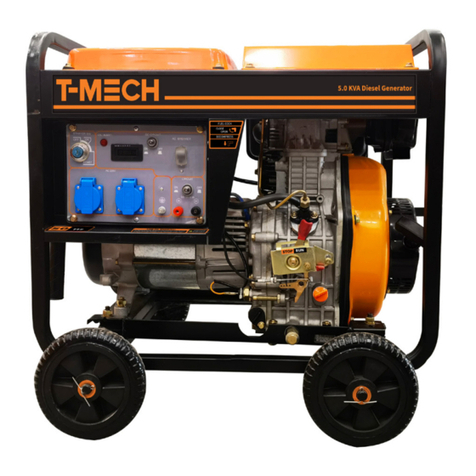
Monster Group
Monster Group T-MECH 210410 instruction manual
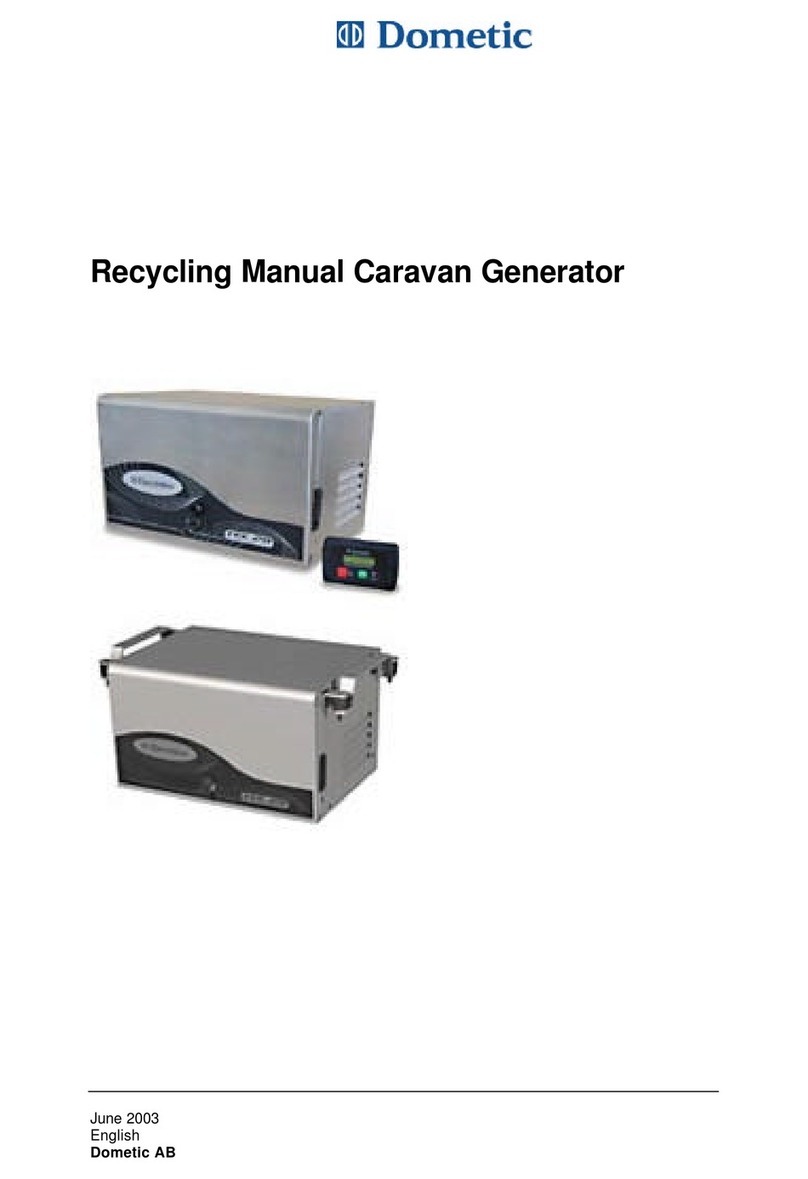
Dometic
Dometic Caravan Generator manual
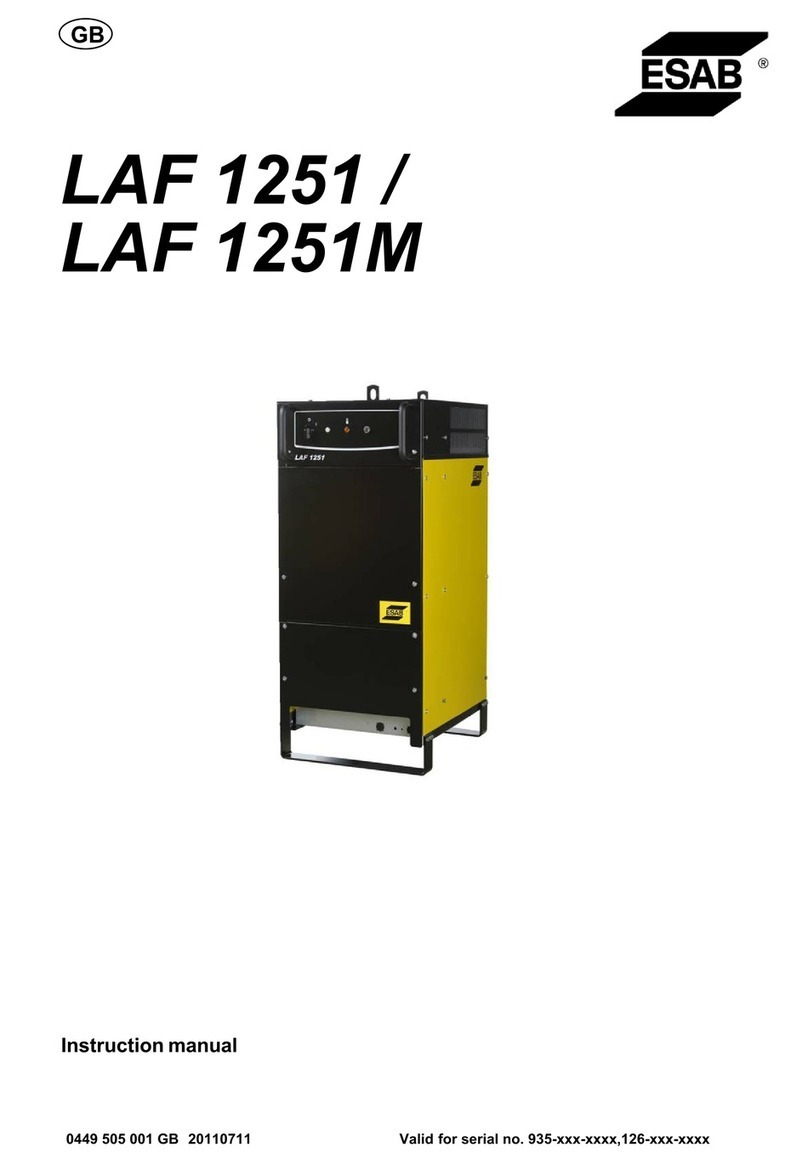
ESAB
ESAB LAF 1251 instruction manual
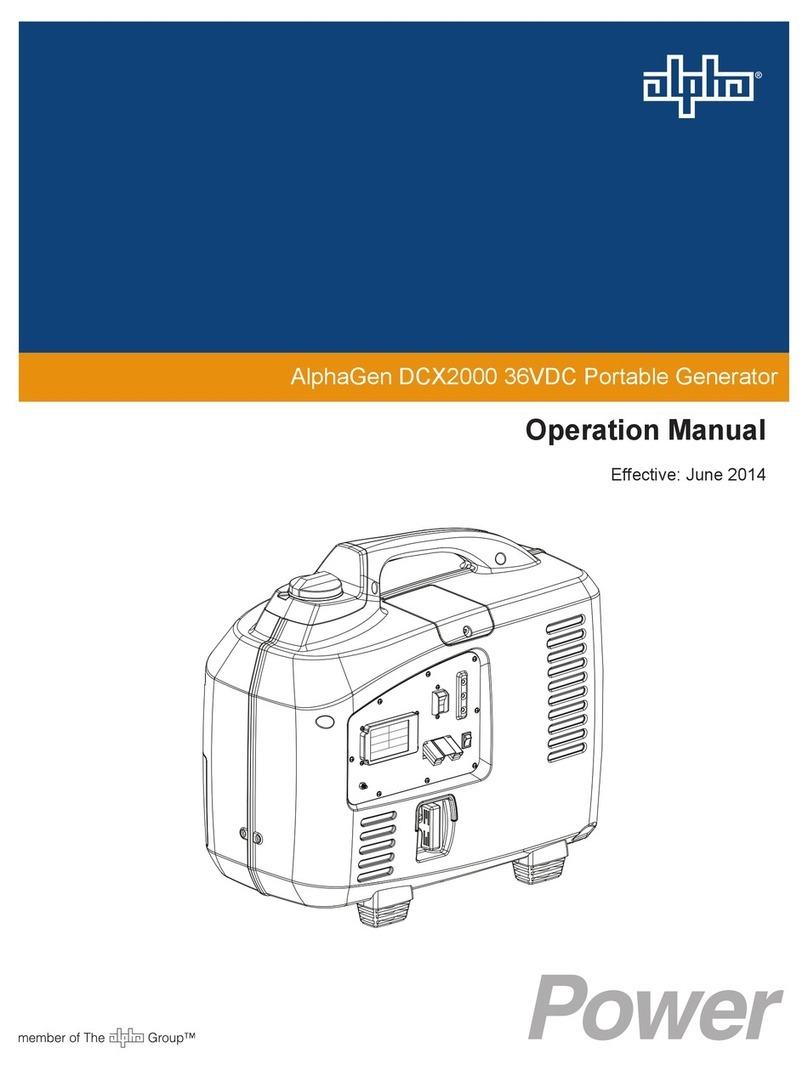
Alpha Technologies
Alpha Technologies AlphaGen DCX2000 Operation manual
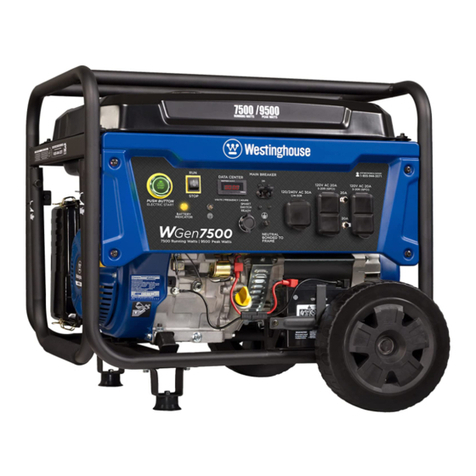
Westinghouse
Westinghouse WGen quick start guide
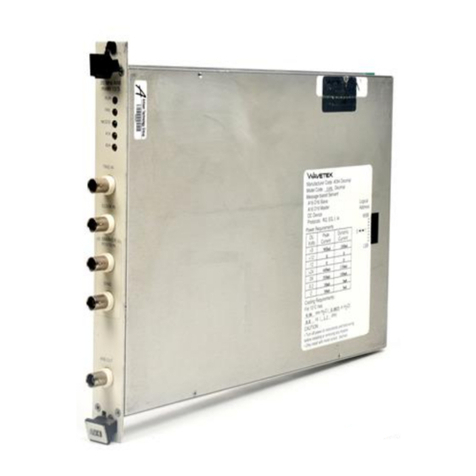
Wavetek
Wavetek 1370 Operator and maintenance manual
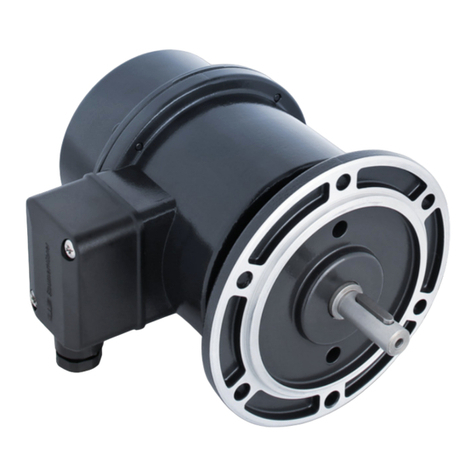
Baumer
Baumer Hubner TDP 0,2+FSL Series Mounting and operating instructions
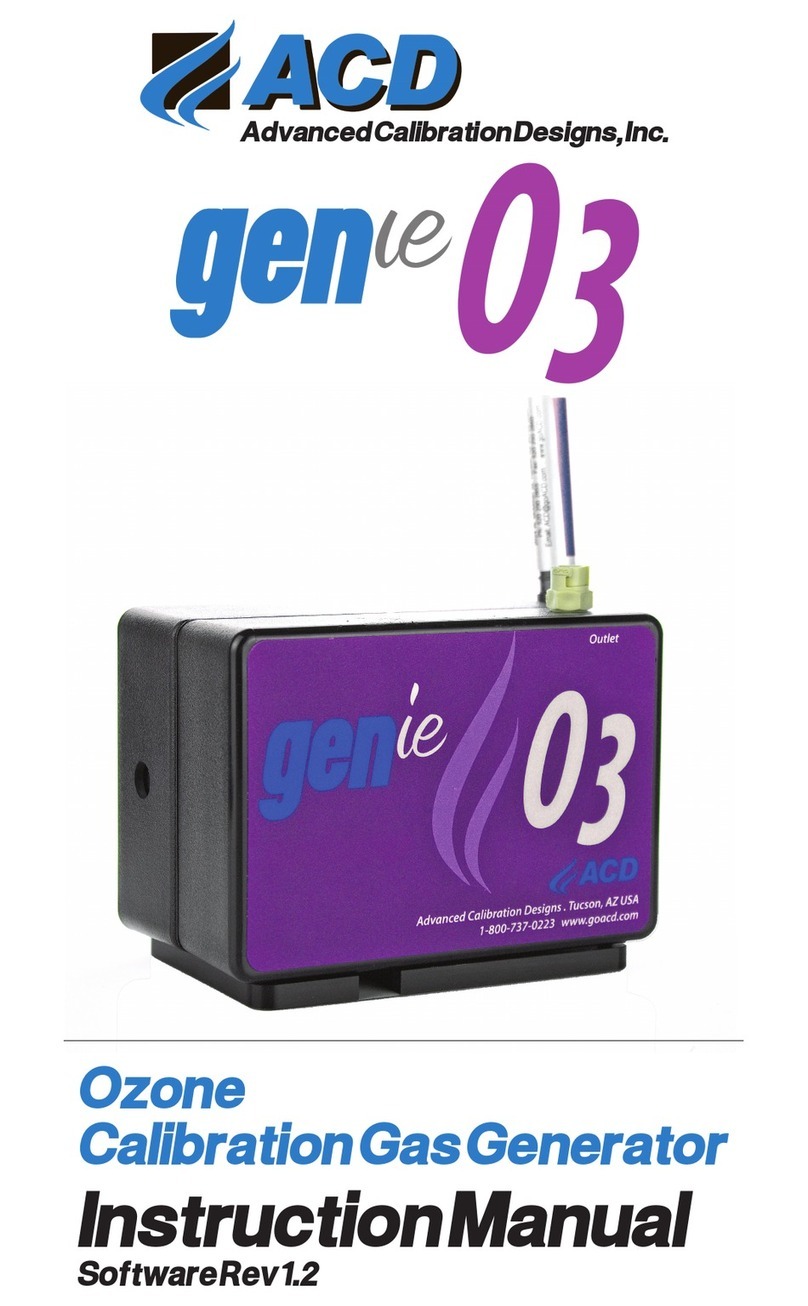
ACD
ACD genie 03 instruction manual

Intelligent Energy
Intelligent Energy R700 user manual
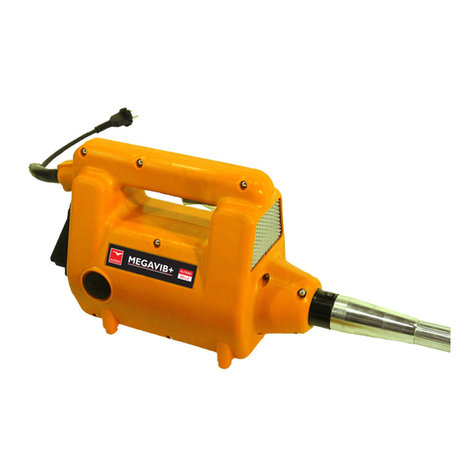
Altrad Belle
Altrad Belle MEGAVIB+ Operator's manual
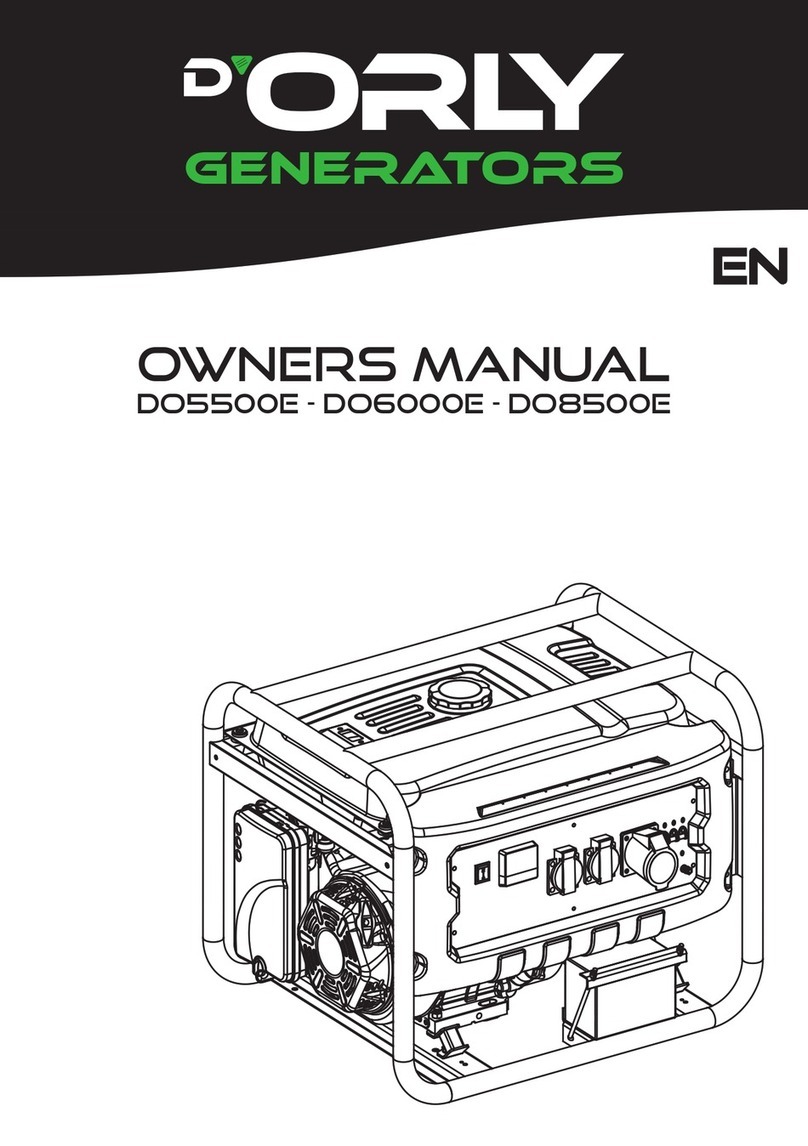
D'Orly
D'Orly DO5500E owner's manual
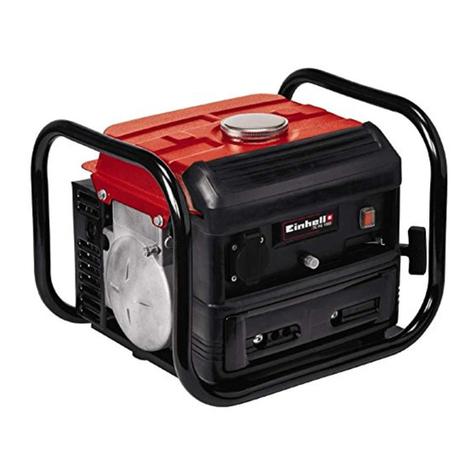
EINHELL
EINHELL TC-PG 1000 Original operating instructions

